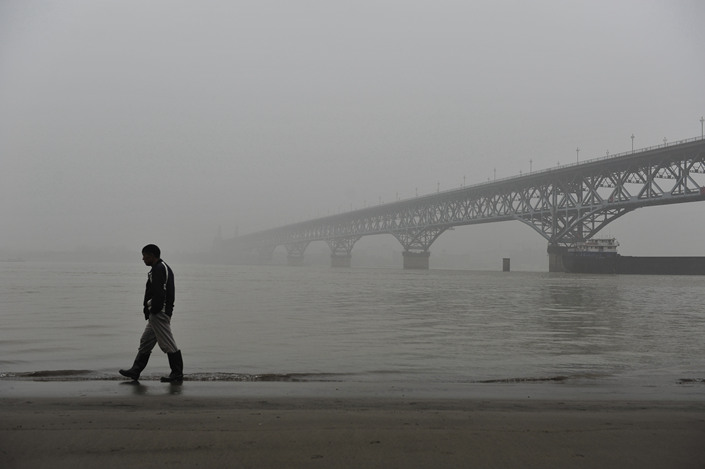Qinghai-Tibet Artificial Rainfall Project ‘Delusional,’ Experts Say

An ambitious project to artificially increase rainfall in a place known as the “Roof of the World” has been criticized by scientists as unfeasible and “delusional.”
The project, dubbed “Sky River,” aims to boost China’s declining water supply by directing rain onto the Qinghai-Tibet Plateau, which is home to the headwaters of major Asian rivers that include the Yangtze and Mekong. Researchers from Tsinghua University and Qinghai University are leading the project, with government funding and support from the China Aerospace Science and Technology Corp. (CASC), a state-owned company that has also played a major role in the country’s space program.
Fuel-burning chambers will be built on Tibetan mountains facing a moisture-laden current (the “river” referred to in the project’s name), the South China Morning Post reported in March, citing unnamed researchers working on the project. According to the researchers, these chambers will produce silver iodide crystals, which will be carried upward by the currents hitting the sides of the mountains, seeding the atmosphere to create clouds. Essentially, the system aims to arrest the moist current and turn it into precipitation over the dry plateau rather than elsewhere on its path through the continent.
The official Xinhua News Agency reported on Nov. 6 that CASC was building six satellites to monitor weather conditions for the Sky River project.
Five billion cubic meters (177 billion cubic feet) of precipitation is expected to be diverted into the region each year, Xinhua reported in 2016.
But last week, ScienceNet.cn, a publication sponsored by the Chinese Academy of Sciences, published a collection of statements from prominent academics criticizing the project.
“This is a preposterous and delusional project with no scientific basis and no technical feasibility,” said Lu Hancheng, a professor at the National University of Defense Technology’s School of Meteorology and Oceanography, in the ScienceNet.cn post.
“The scientific understanding of the physical processes of artificially influencing precipitation is still incomplete,” said Sun Jiming, a meteorology researcher at the Chinese Academy of Sciences.
Du Fu, a researcher at U.S. National Oceanic and Atmospheric Administration, told Caixin: “A ‘sky river,’ generally called ‘atmospheric river’ by meteorologists, isn’t a new concept but is rather a well-known atmospheric phenomenon often used in weather forecasting,
“For example, on the West Coast of the United States, heavy rain is often associated with atmospheric rivers, and China’s southwestern summer monsoon is also full of water vapor.” said Du, who was one of the academics cited by Sciencenet.cn.
Du said he believes it is impossible to manage atmospheric water vapor in such a way, saying, “Artificial rainfall is feasible, but the effect is limited.” He said the project will at most improve meteorologists’ understanding of weather in the area, but at too high a cost.
It’s also unclear what unintended environmental impact the Sky River project may have on an area known for its glaciers and low annual rainfall. Scientists haven’t been able to rule out the possibility of changes in areas downwind of the project, and “at times unintended effects may cross political boundaries,” according to the American Meteorological Society.
Caixin’s attempts to contact Sky River researchers and the official Qinghai Science & Technology Department for comment were unsuccessful.
Contact reporter Teng Jing Xuan (jingxuanteng@caixin.com)

- 1In Depth: China Unveils More Nuanced Economic Plan for 2026
- 2Cover Story: How China Inc. Is Discovering Its New World in Brazil
- 3CATL Tests Humanoid Robots on Battery Production Lines
- 4In Depth: How a Chinese Mining Giant Learned to Win in Brazil
- 5ByteDance Strikes Deal to Keep TikTok Online in U.S.
- 1Power To The People: Pintec Serves A Booming Consumer Class
- 2Largest hotel group in Europe accepts UnionPay
- 3UnionPay mobile QuickPass debuts in Hong Kong
- 4UnionPay International launches premium catering privilege U Dining Collection
- 5UnionPay International’s U Plan has covered over 1600 stores overseas






